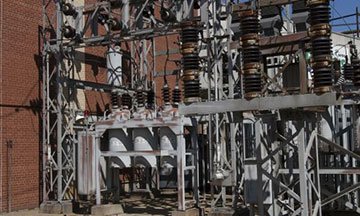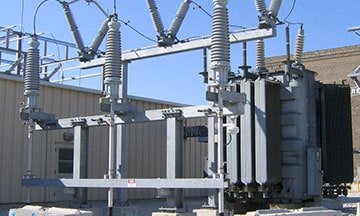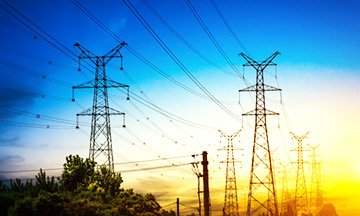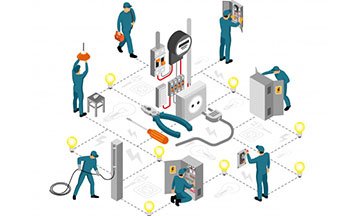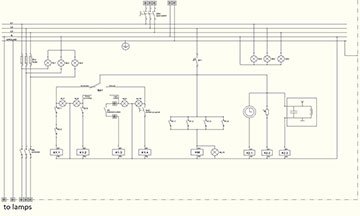Fundamentals of Electrical Substation and Switchyard Design, Safety and Maintenance
Course Overview
This Electrical Substation and Switchyard Design course focus on elementary safety standards and practices in substations and switchyard design. An electrical substation is the component of a power system with which voltages are transformed for the transmission, distribution, transformation and switching of power.
A switchyard is a substation that operates at a single level of voltage without transformers. Therefore, the design and understanding of these components play a huge role in most power systems today. This program covers the key elements of these components along with the electrical, chemical, and personal threats that exist in environments that contain substations and switchyards.
Why are the ‘Fundamentals of Electrical Substation and Switchyard Design, Safety and Maintenance’ course at Zoe the best option for you? At the end of this course, you will be able to effectively comprehend the basics of electrical substations and switchyards. The general practices towards handling situations with impending dangers and accidents are also discussed in this course, thereby making its participants more cautious and alert.
This Zoe training course will also provide you with a mastery in the fundamentals of electrical substations and switchyard design. You will also be acquainted with the theories in protective relays, trip schematics and wiring diagrams, auxiliary gear, as well as substation mechanisation and its integration with the overall systems that it is a vital part of.
Course Objectives
The main objective of this Fundamentals of Electrical Substation and Switchyard Design, Safety and Maintenance course is to empower professionals with:
- Understanding the basic purposes of electrical substations and switchyards
- Differentiating the different types of electrical substations and switchyards
- Grasping different elements in the design of switchyards and electrical substations
- Learning fundamental rules and guidelines used in the generation, transmission and distribution of electric power
- Identifying and operating key equipment used in substations and switchyards
- Training in various layout options for switchyard apparatus
- Analysing earthing methods and lightning defence mechanisms for switchyards
- Using case studies and practical examples in planning their switchyard resources
Training Methodology
This is an interactive Fundamentals of Electrical Substation and Switchyard Design, Safety and Maintenance training program and will consist of the following training approaches:
- Lectures
- Group Discussions
- Videos
- Expert Seminars
- Individual Assignments
- Practical Demonstrations
- Case Studies (e.g. Siemens)
Just like all our courses, this program also follows the ‘Do-Review-Learn-Apply’ model.
Organisational Benefits
Companies who send in their employees for this Fundamentals of Electrical Substation and Switchyard Design, Safety and Maintenance course can benefit in the following ways:
- Obtain experienced and skilled professionals to effectively manage electrical substations and switchyards
- Gain a competitive advantage in the industry with more efficient processes
- Trained employees will be better equipped to prevent issues related to the electrical substation and switchyard design
- Increase employee satisfaction with the provision for professional development
- Optimised operations management leading to reduced maintenance costs
- Reduced costs can mean greater investment opportunities resulting from potentially higher profits
- We can consider tailoring our content to your organisation’s needs
Personal Benefits
Professionals who partake in this Fundamentals of Electrical Substation and Switchyard Design, Safety and Maintenance course can benefit in the following ways:
- Improved knowledge and understanding of basic systems and theories related to electrical substations and switchyards
- Broader perspective to foresee any technical issues hindrances and plan for mitigation to prevent them
- Enhance your capability and skills to assume critical roles associated with electrical substations and switchyards
- Achieve a sense of personal gratification in being able to prevent and handle critical issues
- Increased confidence to achieve a competitive advantage over your peers
- Utilise our case study sessions to gain practical knowledge that will give you an edge in your workplace
Who Should Attend?
This Fundamentals of Electrical Substation and Switchyard Design, Safety and Maintenance course will be of utmost use to substation design engineers and technicians, switchyard design engineers, manufacturing, utility, or plant engineers, substation operators, power system correspondents, project managers, supervisors, or any other roles that require even a basic understanding of substations and switchyards.
Course Outline
MODULE 1: THE ROLE OF SUBSTATIONS IN AN ELECTRICAL NETWORK
- Introduction to networks
- Different voltages in a network
- Types and configurations of substations
- Optimizing the location of a substations
- Outdoor, GIS, and Indoor substations
- Substations as network nodes
- Substation types based on their placement in the electrical network
- Configurations of HV substations based on their bus layout
- Load assumptions for residential and commercial consumers
- Conservational issues in the layout of a switchyard and ways of recovery
MODULE 2: OVERVIEW OF SWITCHYARD EQUIPMENT AND THEIR SPECIFICATIONS
- Primary equipment
- Layout options
- Busbars
- Disconnectors
- Structures
- Sectional and security clearances and their effect on the layout
- Design of busbars (strung/tubular) and interconnections between equipment
- Interconnecting cables and use of marshalling kiosks
MODULE 3: PROTECTION DESIGN FOR SUBSTATION
- Brief outline of protection
- Protection coordination
- Protection of transformers
- Busbar safety
- Feeder safety
- Current transformers requirements for protection
- Equipment requirements for substation automation
MODULE 4: SUBSTATION EQUIPMENT FOR FAULT LIMITING
- Static VAR compensators
- Harmonic filters
- Fault limiting reactors
- Power factor compensation equipment
- Equipment design and ratings
- The layout of the apparatus in a switchyard
MODULE 5: EARTHING SYSTEM AND LIGHTNING PROTECTION OF SWITCHYARDS
- Basics of functional and protective earthing
- Touch and step voltages in substations
- Importance of the switchyard fence in the earth grid
- Safety mesh at operating points
- Purpose of the earth grid in conductor sizing and mesh spacing
- Role of shield wire and lightning masts
- Pros and cons of incorporating the control building inside the switchyard earth grid
- Transferred voltage hazards
- Scheduling the isolation of outgoing services to avoid transfer voltage
- Typical configurations of lightning protection of switchyards
- Investigation of hazards with a cone of protection and rolling sphere techniques
- Selection of lightning arrestors-Types, class and ratings
MODULE 6: SWITCHYARD CONTROL AND INTERLOCKING
- DC equipment configuration and specifications
- DC distribution for switchyard equipment
- Planning the area and related facilities for battery installation
- AC auxiliary power for switchyard systems and loads which need AC power
- Possible source options
- Battery calculations basis
- AC auxiliary circulation for switchyard gear and support systems
- The control scheme of disconnectors and circuit breakers
- Control interconnection approach
- Use of optical fibre-based control scheme
- Role and location of marshalling kiosks in different bays
MODULE 7: SWITCHYARD FACILITY PLANNING
- Site preparation, levelling
- Earth resistivity measures and its importance in switchyard design verification
- Civil mechanisms such as equipment groundworks, cable trenches, control building, storm drains, and transformer oil collection pit
- Switchyard structures and their design prerequisites
- Substation fence and physical security
- Surveillance
- Planning water requirements and supply arrangement
- Fire protection, illumination and ventilation of the relevant areas and equipment
